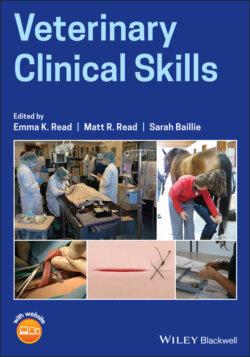Читать книгу Veterinary Clinical Skills - Группа авторов - Страница 7
Оглавление
Preface
Our original vision for this book was to try to collate the content of many years of conversations that we have had with colleagues and students about Clinical Skills teaching and learning into a single, useful resource. Many of those discussions centered around what is known about how to teach and learn better – in essence, where to spend one's precious time, effort, and resources in order to see the best returns. To this end, we wanted to create a book that would appeal to both instructors and students and provide a broad overview of what is already known about teaching and learning Clinical Skills for those starting out so they had a good base from which to take the leap.
We have been fortunate to help institute modern clinical skills training programs into our own institutions at a time when they were just beginning to be implemented across veterinary medicine. In the early days, we learned by trial and error by adapting “hard knocks” lessons we had learned in private practice to our academic learning environments. As programs evolved, so did the research that proves that there is value in learning how to use best teaching practices to inform Clinical Skills instruction. However, even though so much has been published, clinical skills instructors are a generous group and much of the sharing of information still tends to be open source or available by simply asking a colleague. Websites, conferences, and Zoom calls all serve as a means for sharing what we have learned, making sure that someone else does not have to reinvent the wheel.
The basis for this book is that, despite all of the sharing of ideas and best practices that has occurred to date (or maybe as a result of it!), it can still be challenging for instructors and students to review what has been documented about teaching and learning Clinical Skills in one concise place. New instructors often feel overwhelmed with all there is to know about teaching and assessment and, although many teachers may not be new to veterinary medicine or to teaching Clinical Skills, it is the evidence‐based teaching of others that is novel and challenging. Students tackling clinical skills training are often overwhelmed with where to begin and how best to practice the huge volume of skills and procedures that a veterinarian needs to be able to perform following graduation. Although handbooks have been published that list skills and explain “how to” perform a variety of procedures, a concise reference that summarizes all that is known about teaching, learning, and assessing clinical skills all in one place has still been missing.
We hope that this book helps point newbies of all types in the right direction while also serving as a go‐to reference for experienced teachers. The enthusiasm and dedication to clinical skills training is as evident now as it was when it started over 10 years ago and we are immensely grateful to all of the authors who participated in this project and shared their expertise and experiences so openly. Together, we look forward to further innovations that will make even more confident and competent day‐one graduates who will be better prepared to treat the animals in their care.
